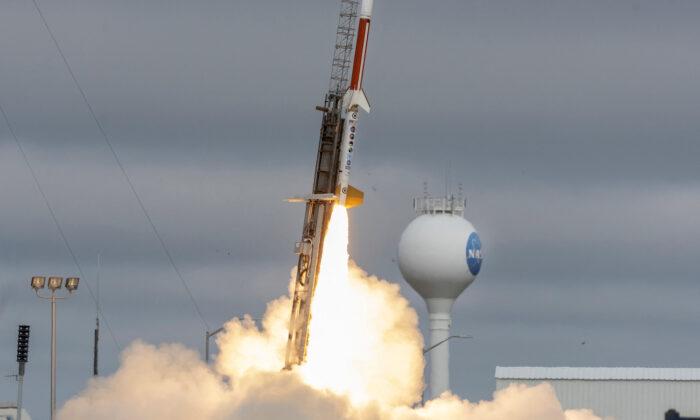The U.S. Navy and Army successfully conducted a test of hypersonic weapons components and materials on Oct. 26, the Pentagon announced, amid continued efforts to surpass Russia and China in developing the emerging class of weapons.
Hypersonic weapons refer to weapons that can travel faster than Mach 5—meaning five times faster than the speed of sound, or around 3,800 mph (6,116 kph)—and can maneuver during the flight.
Sandia National Laboratories ran the test from a seaside launch pad at NASA’s Wallops Flight Facility in Virginia.
The test involved a precision launch of a sounding rocket—a smaller and more affordable test vehicle—to test various hypersonic weapon communications and navigation equipment.
Tests also included seeing whether materials could withstand the heat generated when traveling at Mach 5.
“These rockets contained experimental payloads that provided data on the performance of materials and systems in a realistic hypersonic environment,” the Navy said in a statement.
A second sounding rocket was to be launched this week to complete the latest round of testing.
The Navy said that the sounding rocket launches “fill a critical gap between ground testing and full system flight testing” during weapon systems development.
“This test is a vital step in the development of a Navy-designed common hypersonic missile,” the Navy stated. The missile consists of a booster rocket and a Common Hypersonic Glide Body (CHGB).
The system would be fielded by both the Navy and Army, with individual weapon systems and launchers tailored for launch from sea or land.
The first full-system test of the CHGB hypersonic weapon was conducted on June 29 at the Pacific Missile Range Facility in Hawaii. But it failed because of an unspecified “anomaly” after ignition.






Friends Read Free